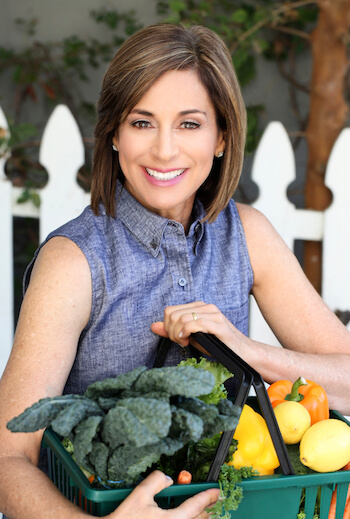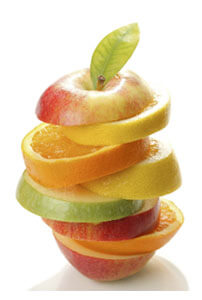Recently, I asked one of my clients if she thought she was an “emotional eater.” So let me ask you — are you an emotional eater? I’m not talking about someone who gets excited just because it’s dinner time, or someone who gets upset when she burns the main dish.
 Emotional eating is typically defined as “eating as a response to how you feel, or to avoid feeling.” When we’re sad about a relationship break-up, for example, we break out the ice cream. Anxious about our job? We open a bag of chips. For many people, this type of reactionary eating is so ingrained, they don’t even notice it. This explains why fad diets aren’t sustainable – they don’t address our relationship to food. If we don’t understand why we eat the way we do, we are bound to keep repeating the pattern. This is one reason why having a health coach is so valuable to your weight loss, health and nutrition goals. We are trained to hear what you’re saying, and to listen in a way that gives us clues about your relationship with food. Learning these clues is incredibly empowering and helps clients overcome long-time obstacles to finally reach their goals!
Emotional eating is typically defined as “eating as a response to how you feel, or to avoid feeling.” When we’re sad about a relationship break-up, for example, we break out the ice cream. Anxious about our job? We open a bag of chips. For many people, this type of reactionary eating is so ingrained, they don’t even notice it. This explains why fad diets aren’t sustainable – they don’t address our relationship to food. If we don’t understand why we eat the way we do, we are bound to keep repeating the pattern. This is one reason why having a health coach is so valuable to your weight loss, health and nutrition goals. We are trained to hear what you’re saying, and to listen in a way that gives us clues about your relationship with food. Learning these clues is incredibly empowering and helps clients overcome long-time obstacles to finally reach their goals!
So back to my client. She told me that she didn’t think she was an emotional eater at all. That food wasn’t even all that imporant to her. Well, except for one type of food. She had come to me with the goal of giving up sugar for a month, in hopes of breaking her sugar habit and being more in control of the treats she eats. She made her statement to me about not being an emotional eater during our first session – before she had actually started her month of sugarlessness.
During her second session, two weeks later, she said she had done remarkably well. I asked her how she felt during her 14 days of no sugar. This is what she said:
“The first few days I felt good about it. I was able to resist even my favorite dessert — cake with icing – even though I went to two graduation parties and one birthday celebration and everyone served cake!
“The next week was harder, but I found that when I started my day with the green smoothie recipe you gave me, I did better. By the third week, I have to admit – I actually felt a little depressed.” (Even I was surprised by her feelings; I’ve known this woman for two decades, and she is the “eternal optimist.”)
My client continued, “I didn’t have my cookie or cupcake to look forward to when I got home at the end of the day and I felt sad. And one time, I walked into the convenience store at the gas station and looked at the rows and rows of candy, and I whispered, ‘Hey guys. I’m so sad. I can’t take one of you home with me.’ It was as if they were my old friends, and I’d broken up with them.”
 Well, if that’s not emotional eating, I don’t know what is! As her coach, I could hear what she was saying, and more importantly, how much power she was giving her “friend,” sugar. So I reminded my client that she has many aspects of her life to look forward to at the end of the day: a close-knit family, a healthy body, a beautiful home, great friends (human friends, not candy bars!) Put in that context, my client realized how dependent she was on her afternoon treats.
Well, if that’s not emotional eating, I don’t know what is! As her coach, I could hear what she was saying, and more importantly, how much power she was giving her “friend,” sugar. So I reminded my client that she has many aspects of her life to look forward to at the end of the day: a close-knit family, a healthy body, a beautiful home, great friends (human friends, not candy bars!) Put in that context, my client realized how dependent she was on her afternoon treats.
Learning about her relationship to food was a revelation for my client, and she realized she didn’t necessarily want to go the rest of her life without eating something sweet, but she wanted to significantly cut down, choose healthier and have control. So we worked on creating “crowding out” strategies – how to crowd out unhealthy sweets with better alternatives. The goal is to retrain your taste buds, your habits, and your reaction to the emotions life brings.
A few of the foods I suggested my client choose to “crowd-out” sweets includes:
Old Choice New Choice___________________________________
- Cookies and candy Fuzzy Kisses by Arden Garden, sold at Whole Foods
or www.ardengarden.com
- After-dinner treat Frozen fruit dessert
- Morning bagel Oatmeal with frozen blueberries
- Vending Machine snack Apple and almonds (pack it and bring to work!)
These are just a few the foods I often recommend to help “crowd-out” sweets. But because every client’s food preferences and dietary needs are different, it’s exciting to work together to customize healthy eating to your lifestyle (and tastebuds!) preferences, etc.
Most helpful was finding a way for my client to get more greens in her diet, and to convince her NOT to skip breakfast. (That was one reason she was stopping by the vending machine for a quick fix to her afternoon energy slump.) Now she starts most mornings with my protein shake recipe, packed with protein, and she eats a salad with grilled chicken or fish several times a week.

My client won’t always long for the days when she found happiness in a Hershey bar. But for now, simply understanding her emotional connection to food has been a great first step in helping gain control of her choices.
What foods do you choose to “crowd-out” your cravings? I’d love to know – leave me a comment!
 Hi, I’m Linda. As a National Board-Certified Health and Wellness Coach, my passion is empowering my clients to take control of their relationship to food, their health, and their overall wellbeing. Nothing makes me happier than my clients who have reached their goals and are symptom-free, lighter, and have more energy and confidence than ever before!
Hi, I’m Linda. As a National Board-Certified Health and Wellness Coach, my passion is empowering my clients to take control of their relationship to food, their health, and their overall wellbeing. Nothing makes me happier than my clients who have reached their goals and are symptom-free, lighter, and have more energy and confidence than ever before! 